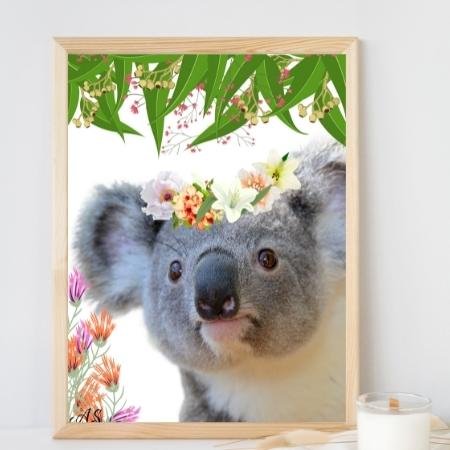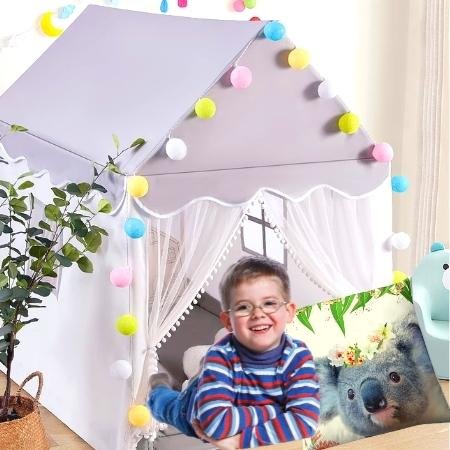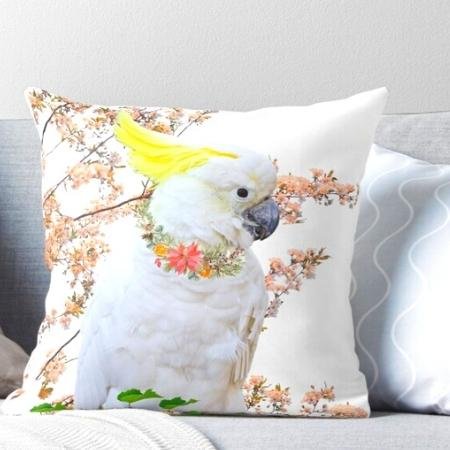7 Reasons Why All Kids Need A Calming Corner And How To Create One
Disclaimer: This page contains affiliate links. If you choose to make a purchase after clicking a link, I may receive a small commission at no additional cost to you. Thank You for your support.What is a Calming Corner?
A calming corner is a space where a child can go to de-stress and self-regulate.
It is usually set up in a quiet, isolated area of a room with calming colours and soft lighting.
The calming corner should be stocked with calming objects such as stuffed animals, bean bag chairs, blankets, and pillows.
A calming corner is not a naughty corner but a safe place for all children.
Why Is A Calming Corner Important for All Children?
Children are naturally curious and imaginative creatures, but they can also be easily overwhelmed by the world around them.
A calming corner is a safe space for a child to go when they are feeling overwhelmed or anxious.
The calming corner can be used as a tool to help the child learn how to self-soothe and manage their emotions.
Creating a calming corner is also beneficial for children's mental health.
A calm and relaxing environment can help to prevent or reduce symptoms of anxiety and depression. It can also promote positive self-esteem and body image.
7 Reasons Why Kids Need a Calming Corner
Pin this post to Pinterest
1. A Calming Space Can Help Children Cope with Sensory Overload.
A calming corner can be particularly helpful for children who have sensory processing disorder or anxiety.
For these children, the world can be a very overwhelming place.
The sights, sounds, and textures can be too much to handle, and they may feel like they are constantly on the verge of being overwhelmed.
A calming corner can provide a much-needed respite from the chaos of the world.
It can also help to reduce sensory overload and meltdowns.
2. It Provides a Safe and Calming Space for Children to Retreat to When They Are Feeling Overwhelmed or Stressed.
When a child is feeling overwhelmed or anxious, the last thing they need is to be around a lot of people.
A calming corner can provide a quiet and isolated space where they can take a few deep breaths and relax.
3. A Calming Corner Can Help Promote Self-Regulation and Emotional Control.
It's not uncommon for children to have trouble managing their emotions. They may get angry or upset easily, and lash out in response to minor frustration.
However, children who have a designated space to calm down are more likely to be able to manage their emotions and stay calm in difficult situations.
By giving children a place to calm down, we can help them develop the skills they need to better manage their emotions and stay calm under pressure.
4. A Calming Corner is Beneficial for Children's Mental Health.
Some kids have a hard time regulating their emotions, which can lead to anxiety, depression, and other mental health issues.
A calming corner can be a valuable tool in helping to prevent or reduce the symptoms of these disorders. This is a place where the child can take a break from whatever is causing them stress and recharge.
5. It Can Help Kids Feel Safe and Secure.
Some kids feel unsafe in their own homes. They may feel like they are constantly being watched or that they are not allowed to relax and just be themselves.
A calming corner can provide a safe space for kids to relax and escape the pressures of the world.
6. It Can Help Kids Focus.
Pin this Post to Pinterest
Kids who struggle with focus and attention often find it difficult to remain calm in a noisy, busy environment.
A calming corner can provide a quiet and distraction-free space for kids to focus and regain their concentration.
7. A Calming Corner Can Promote Positive Self-Esteem and Body Image.
Children who feel good about themselves are more likely to have a positive self-image.
A calming corner can be a place where kids can relax and escape the pressures of the world.
It can also be a place where kids can express their feelings and thoughts freely without judgment.
They may feel more comfortable talking about things that are bothering them in a calm and relaxed environment, where they are surrounded by things that comfort them.
2. Make Sure the Space has Soft Lighting and Soothing Colours
This space should be designed to promote relaxation, and soft lighting and soothing colours are two key elements.
Bright lights and loud colours can be stimulating for children, so it's important to choose colours that are calming and relaxing, such as pastels, or natural earthy tones.
And the lighting should be soft and diffused, without any harsh glare. By creating a tranquil environment in the calming corner, you'll give children a safe space to relax and de-stress.
3. Add Cushions, Beanbags, or Floor Pillows
Add cushions, beanbags or floor pillows so that your child has a soft spot to lay on as they relax their body and mind.
Plus, they can help to reduce noise levels in a room.
Soft furnishings are also a good choice for kids with sensory issues or who are on the autism spectrum.
The textures and colours can be soothing and provide a visual focal point. And they can be easily moved around, so you can create different spaces depending on your child's needs.
4. Personalize the Space with Pictures of Favourite People, Pets, and Artwork.
Personalizing the space with favorite pictures and artwork can help to make it feel like a special place just for them.
It can also help children to develop a sense of ownership and responsibility for their own well-being.
When children feel like they have some control over their environment, it can help to reduce anxiety and promote feelings of calmness.
So, while a calming corner should be a safe haven for all children, personalizing it with each child's favorite things can help to make it an even more soothing and effective space.
5. Add a Weighted Blanket to the Calming Area.
Weighted blankets are a type of therapeutic blanket that is designed to provide deep pressure stimulation.
When used correctly, weighted blankets can help improve sleep quality and reduce stress levels.
It provides children with a sense of security, calmness and comfort.
The deep pressure stimulation can help to decrease hyperactivity and fidgeting, promoting a sense of relaxation.
6. Add a Calming Basket to the Calming Space
Add a calming basket to the calming space filled with sensory toys and activities to help calm children down.
The sensory items are particularly important, as they can help to engage the child's senses and distract them from whatever is causing them stress and help self regulate.
How to Create a Calming Basket for the Calming Space
With Objects that can comfort your child, such as:
1.Cuddly Toys
Purrble (a cuddly toy whose heartbeat syncs with your child's heartbeat and calms down as your child does. It helps your child learn to self-regulate.)
2. Sensory Toys
Save this Post to Pinterest for Future Reference
Children are constantly bombarded with new sensory information.
Bright lights, loud noises, and rough textures can be overwhelming for little ones.
This is why sensory toys are so important.
By providing a child with a safe outlet to explore their senses, you can help them to focus and calm down.
By giving children the opportunity to explore their senses in a safe and controlled environment, you can help them to develop focus and self-regulation skills.
Some Sensory toys that can help are:
Stress Ball- squish, squeeze or sling
Liquid Motion bubbler- it is soothing and mesmerizing to watch the descending bubbles.
Play doh Sparkle pack-can help sooth children as squish, squeeze and pound their anxiety and frustrations out on the play doh. The sparkles will engage children’s interest for longer.
3. Fidget Toys
Fidget toys can provide a much-needed outlet for excess energy, helping children to focus and stay on task.
The act of fidgeting itself is also believed to help improve blood circulation and increase oxygen flow to the brain, which can improve concentration levels.
In addition, fidget toys can also help to relieve stress and anxiety, both of which can be major triggers for disruptive behavior.
And while they may not work for every child, they can provide a welcome relief for those who find it difficult to stay still.
Some Fidget toys that can help are:
This 50 pieces fidget sensory toys pack is great for relieving stress and anxiety. It helps children concentrate while keeping their hands busy as they squeeze, stretch, press, twist and flip the toy.
6 Pack 24 Links Wacky Tracks Snap and Click Fidget Toys- the links pivot which allows children to keep their hands busy as they destress while increasing their focus and attention.
4. Mindfulness Activities
Mindfulness Activities are a great way for children to calm down and focus their attention.
By focusing on their breath or on a simple task, children can learn to control their thoughts and emotions.
As a result, they'll be better able to cope with stressful situations both in the moment and in the future.
In addition, mindfulness can help to improve overall well-being by reducing anxiety and promoting positive thinking.
So Next time your child is feeling stressed or overwhelmed, try incorporating this book with 50 mindfulness activities into their calming space.
It just might make all the difference.
Here is an article for further help-How to Teach Mindfulness to Kids: 26 Fun and Easy Ways to Get Started!
5. Breathing Exercise Cards
When children get angry or upset, their breathing can become shallow and rapid.
This can make them feel even more anxious and overwhelmed.
However, teaching children some simple breathing exercises can help them to calm down and regain control.
Add these Breathing Exercise Cards (34 beautifully illustrated cards) to their Calming Corner for easy access to help your child regain calm and focus.
6. Yoga Cards
In a fast-paced world filled with constant stimulation, yoga can help children to slow down and focus.
The deep breathing techniques learned in yoga can also help to calm the nervous system.
In addition, the physical postures help to improve strength and flexibility.
For children who are struggling with anxiety or stress, this Yoga card set can be an extremely helpful tool. It teaches children how to focus their attention and connect with their breath, can help your child feel calmer and more centered.
The pictures on these Yoga cards are easy to follow and practice Yoga poses by the kids themselves.
7. Books about Emotions or Favorite Story/ Picture books
This box set contains 8 books. Each book introduces a new or a different emotion and helps the children understand what that emotion is.
But most importantly the books share real-life, practical suggestions for regulating emotions.
These books are about helping children better understand and express their emotions and develop a better sense of problem solving skills in social situations.
Conclusion
All kids need a calming corner in their home.
It can provide self-regulation, anger management, mental health, and focus benefits.
This can help them to develop a deeper spiritual connection and experience inner peace. A calming corner or a calming space is safe haven for all children.
Parents can create a calming corner for their children with a few simple steps.
Encourage your child to use the calming corner when they are feeling overwhelmed or stressed.
Let them know that it is a safe and calm space where they can relax and recharge.
Read this article if you’d like some tips and strategies for How To Be A Supportive Parent When Your 4-Year-Old Has Anger Issues
or
Get 9 Tips-Teach Your 4-Year-Old How To Manage Anger Naturally Here


















